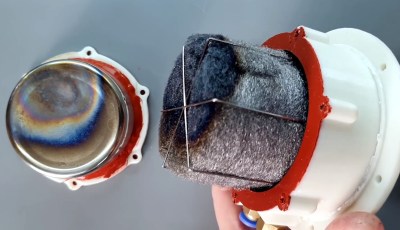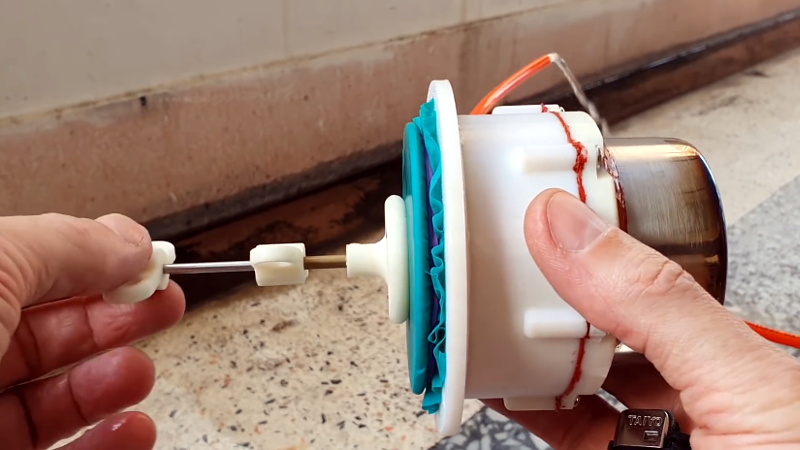The Stirling external combustion engine has fascinated gear heads since its inception, and while the technology has never enjoyed widespread commercialization, there’s a vibrant community of tinkerers who build and test their own takes on the idea. [Leo Fernekes] has been working on a small Stirling engine made from 3D printed parts and common hardware components, and in his latest video he walks viewers through the design and testing process.
We’ve seen Stirling engines with 3D printed parts before, but in most cases, they are just structural components. This time, [Leo] really wanted to push what could be done with plastic parts, so everything from the water jacket for the cold side of the cylinder to the gears and connecting rods of the rhombic drive has been printed. Beyond the bearings and rods, the most notable non-printed component is the stainless steel spice shaker that’s being used as the cylinder.

Mating the hot metal cylinder to the 3D printed parts naturally introduced some problems. The solution [Leo] came up with was to design a toothed collar to hold the cylinder, which reduces the surface area that’s in direct contact. He then used a piece of empty SMD component feed tape as a insulator between the two components, and covered the whole joint in high-temperature silicone.
Like many homebrew Stirling engines, this one isn’t perfect. It vibrates too much, some of the internal components have a tendency to melt during extended runs, and in general, it needs some fine tuning. But it runs, and in the end, that’s really the most important thing with a project like this. Improvements will come with time, especially once [Leo] finishes building the dynamometer he hopes will give him some solid data on how the engine’s overall performance is impacted as he makes changes.
If you’ve got a glass test tube laying around, putting together a basic Stirling engine demonstration is probably a lot easier than you might think. Commercial kits are also available if you’re looking for something more substantial, but even those can benefit from some aftermarket modifications. With a little effort, you’ll have a power plant ready for the surface of Mars in no time.
[Thanks to Baldpower for the tip.]
















“External ‘combustion'” engine?!?!
…yes? That’s what steam engines and such are called, since the fuel is being burned outside the cylinder. In this case, the butane torch.
Or even no combustion engine – its quite possible to power a Stirling engine by focusing the Sun’s power, radioactive elements, or by cold – for instance the river water temperature vs surrounding air temperature (or deep vs surface water) can be enough – but the efficiencies and power output are not good unless the thermal differential is rather large..
Never seen one with that style of ‘cam-shaft’ mechanism… Very fun to look at, and that engine seems to pack a pretty impressive kick for such a primitive piece of engineering – its done really well, and get the issues highlighted sorted out seems like a great easy engine to create, as anybody interested in the sciences and making is bound to able to access a 3d printer, where a machine shop is much harder and more expensive, but the 3D printed nature really limits the design.
I’m glad to see Leo’s work getting some exposure. I’ve enjoyed his explanatory style and learned a lot along the way.
Agree. Far away from many click-oriented youtubers who just gesticulate, embed advertising, perform stunts, but delivers no substance: files, text, code, explanations, illustrations.
I’m rather amazed that a 3D printed Stirling (plus blowtorch) works for more than a few minutes, but the water cooling must really function pretty well considering all the “Thermal Nastiness”.
Put the power that you create to use. I would look into a mechanism that i cant remember what country was building to harness the force of the tidal water lvl changes. They made a nice mechanism that would take your plunging action and turn it into a direct rotational one regardless of push or pull. It would satisfy symmetry and be more compact. Then capture energy to turbocharge a micro tesla pump to your water line. Plumb the water through some copper tubing. Add a fan to cool this and you should be able to replace the water with automotive engine coolant. Make it a closed loop. Add threads to the inner of the cooling collar so it makes a coiled path.